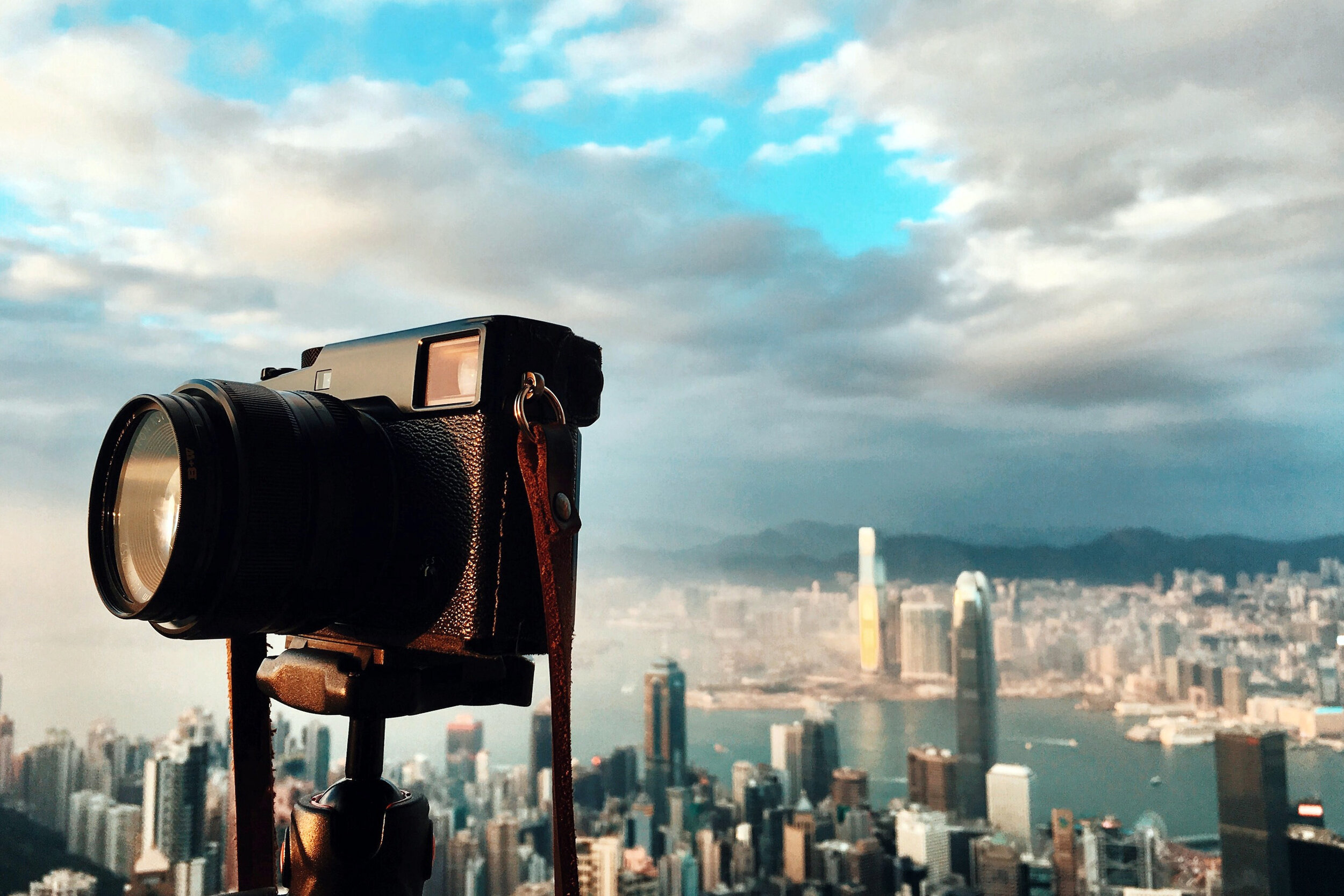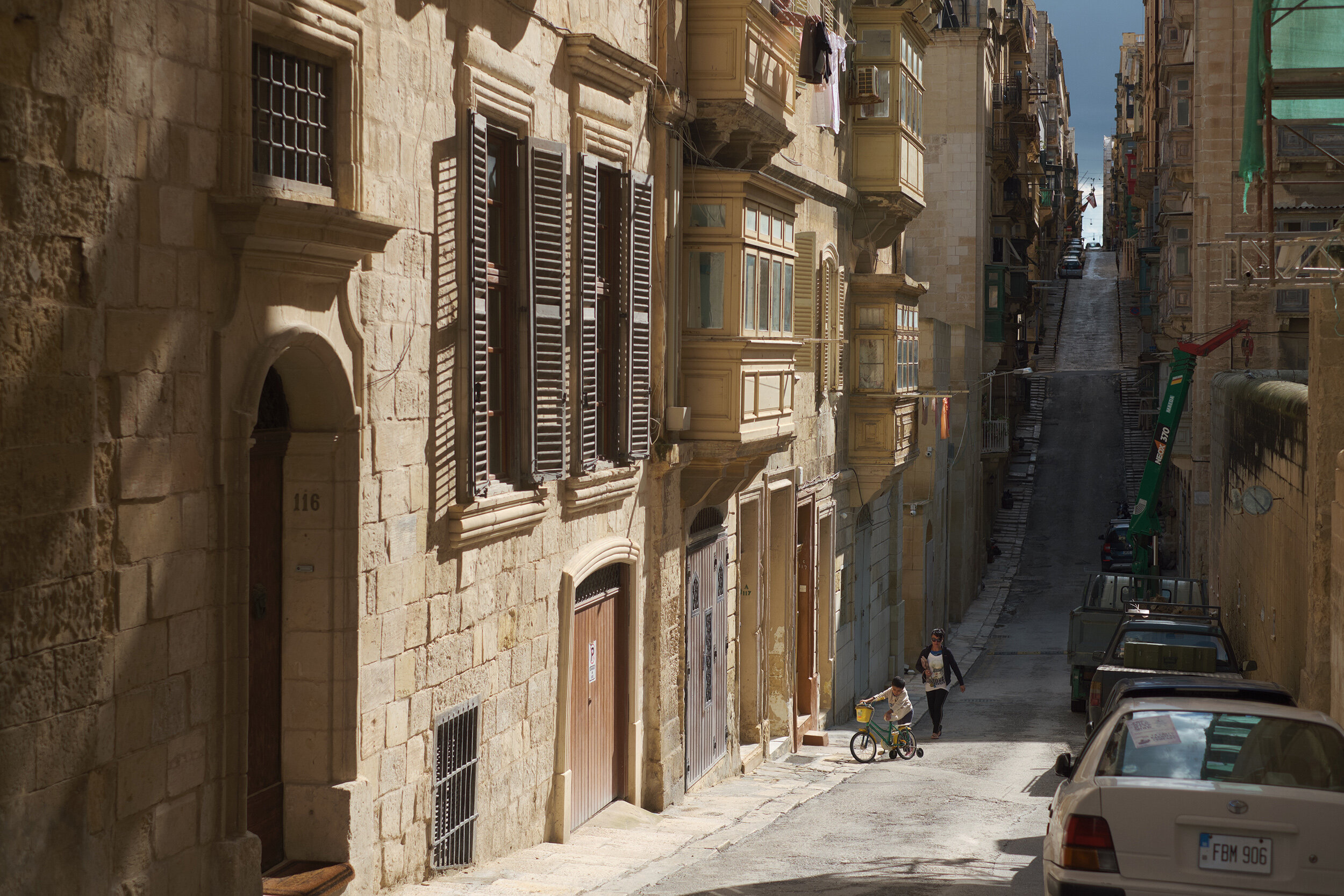Fujifilm X-Pro2 Review

The Fujifilm X-Pro2 shown with an XF 35mm f/1.4 R in Hong Kong
Long Term Review of the Fujifilm X-Pro2
The Fujifilm X-Pro2 has been my go-to camera since spring 2016, when I purchased my first one in Paris. I was traveling at the time and was excited to trade in my X-T1. So why write about the X-Pro2 in 2020? There is already a new X-Pro3 option for us.
This article was written during the Coronavirus lockdown in early May of 2020. Lately, I have seen the following question pop up on the Fujifilm X Series Facebook forum a few times: Should I get a new X-Pro3 or save a significant amount of money, usually around $1,000.00 - $1,500.00, and get a pre-owned X-Pro2 instead?
Fujifilm X-Pro2 with XF 35mm f/2 R WR
I hope to test the X-Pro3 in the near future and will share my thoughts on this camera. In the meantime, let's take a look at the X-Pro2 and determine if it's a reasonable choice during this lockdown period.
Fujifilm X-Pro2 History
The X-Pro2 was released in January 2016 and was ready in stores a couple of months later, approximately four years after the X-Pro1 was introduced.
The camera was highly anticipated, and the patience of Fuji shooters had been thoroughly tested as they waited a long time for this update.
The X-Pro1 had been plagued by problems in the early days, most of which were resolved via firmware updates, but it was time for a significant update. And we got just that.
Cliffs of Moher, Ireland, Fujifilm X-Pro2, XF 35mm f/1.4 R @ f/11
The most notable updates for the X-Pro2 were the 24-megapixel X-Trans sensor, an improved electronic viewfinder (EVF), a joystick for navigation and manual selection of autofocus (AF) points, and enhanced video specifications.
Further to this, we got better and faster operation, autofocus performance, dual SD card slots, and new film simulations, namely Classic Chrome, and the excellent black and white Acros film simulation, which I use all the time.
The body style and button layout were also updated. The upgrade was a no-brainer if you were a fan of the body style with the hybrid viewfinder and optical/electronic viewfinder.
Fujifilm X-Pro2 with an XF 14mm f/2.8 R
Handling
Being used to the handling and layout of the X-Pro1, it was easy to adjust to the X-Pro2.
You may ask, why use a camera like the X-Pro2 when the EVF on an X-T3 or X-T4 is bigger with better resolution and refresh rate? It's hard to answer, but I prefer the X-Pro styling and handling, and I realize it’s a personal choice.
The X-Pro series camera is more reminiscent of old rangefinder-style cameras, and this I find quite appealing.
Mandalay, Myanmar, Fujifilm X-Pro2, XF 90mm f/2 R LM WR @ f/5.6
The ISO dial on the X-Pro2 is a bit fiddly. It is not a deal-breaker for me, but there’s room for improvement. The biggest issue I have with the X-Pro2 is the eyecup and diopter settings.
My eyecup came off during travel, and a failed attempt to glue it back on has left the rubber ring permanently detached. The camera is still fully functional, but it is an eyesore.
The diopter dial will move during everyday use and when carrying the camera, unless you cover it with gaffer tape to keep it in place.
I am a big fan of the shutter sound on the X-Pro2. Some may think this is a silly thing, but the sound of the shutter gives a resounding thunk without being too loud.
Fujifilm X-Pro2 and XF 18mm f/2 R
In Action
You could argue that a camera is just a tool. A cold piece of metal, such as aluminum, plastic, or titanium, or whatever the camera is made of, is a piece of kit. I don't recall, in 35+ years of photography, having a stronger connection or bond with a camera than I do with the X-Pro2.
There is a good reason for this. The X-Pro2 has been my companion in almost all the 50 countries we've visited as part of our 5050 travel project, where we set a goal to visit 50 countries in 50 months after turning 50. We reached our goal just before the lockdown when we spent a month in New Zealand.
Fujifilm X-Pro2 with the Zeiss Touit 12mm f/2.8
During our travels, the X-Pro2 camera worked without a hitch. I should say, two cameras. My first X-Pro2 was stolen in Rome in December 2017, so I ordered a replacement.
The X-Pro2 has also been my main camera for pro gigs, commercial photography, weddings, portrait sessions, sports, and landscape photography.
Once you get to know the X-Pro2, there is not much you can’t do with it. Realistically, there are better options out there if you need a high megapixel output, ie, for landscape photography.
Bangkok, Thailand, Fujifilm X-Pro2, XF 35mm f/1.4 R @ f/1.4
For most scenarios, I have found 24 megapixels to be sufficient. When faced with spectacular landscape scenes, I sometimes take multiple shots and merge them in Lightroom for a larger file.
For sports or wildlife photography, the X-Pro2 shoots a decent 8 frames per second, and I find tracking to be okay. If these are your main photography interests, you may, however, consider some of the newer options, ie. X-T3, X-T4, or the X-Pro3. The MHG-XPRO2 grip is great if you want to use the X-Pro2 with some of the bigger XF lenses.
X-Pro2 with an MHG-XPRO2 grip and XF 50-140mm f/2.8 R LM OIS WR
The X-Pro2 is an excellent option for street photography. The camera has an inconspicuous old-school film camera look to it.
That is not to say you could not take the same photos with an X-T2, which you can. But an X-Pro series camera may blend in more and give you that Henri Cartier-Bresson vibe.
Budapest, Hungary, Fujifilm X-Pro2, XF 90mm f/2 R LM WR @ f/4.5
Fujifilm X-Pro2 vs. X-Pro3
I will not be able to draw conclusions until I have had a chance to fully test the X-Pro3. I should have an X-Pro3 for testing soon. I will, however, touch on some of the most significant differences, some promising, and some that are somewhat controversial.
Before the X-Pro3 launch, I took a look at my X-Pro2 and could only come up with five things I hoped to see. I did not know what was coming. The new 26.1-megapixel X-Trans IV sensor was already expected, as it was seen on the X-T3.
Better eyepiece/diopter solution
Better overall build quality and visual improvements
Improved video specs
A surprise new film simulation
Better battery life, perhaps even a new battery
The rear LCD and button layout of the Fujifilm X-Pro2
At this point, I have only had a brief hands-on with the X-Pro3 in Copenhagen. At first glance, I found the overall feel on par with the X-Pro2.
I tried the standard black, and the new titanium finish looked okay, but it didn't feel or look significantly better. I would love to try the Dura Black or Dura Silver.
The eyepiece problem has been fixed, looks way better, and the diopter can now be adequately locked so that you won’t move it inadvertently. Awesome. The video specs were improved, and the X-Pro3 is now a more viable option in that department.
The Classic Neg. film simulation looks very promising. The battery is unchanged.
Paphos, Cyprus, Fujifilm X-Pro2, XF 14mm f/2.8 R @ f/8
The controversial part of the X-Pro3 revolves around the rear LCD, which is now hidden. You need to flip the screen down to see your images or make menu changes using the LCD.
On the back of the camera, you'll find a small LED that shows film simulations. Just like old film slips put in the rear panel of film cameras. Cool or gimmicky? I am not sure yet.
You can also view shooting information like on the X-H1. This sounds promising. However, it won’t work in the dark when you really need it. I want to try the camera before passing further judgment on the flip-down rear LCD and back panel display.
Update:
I have since purchased an X-Pro3 and have a review here:
Fujifilm X-Pro2 with the XF 23mm f/1.4 R and a vented hood
Fujifilm X-Pro2 Image Quality
I will post sample images below from our travels and other shooting scenarios using a range of lenses with the X-Pro2.
The 24-megapixel X-Trans sensor delivers wonderful colors with excellent dynamic range, and images are easily processed in post. And who doesn't like speedy post-processing?
I have slowly moved my workflow over to Capture One Express from Lightroom. I may take a closer look at Capture One Pro. Feel free to comment below on this topic.
Fujifilm X-Pro2 with the XF 35mm f/2 R WR
Conclusion
Is the X-Pro2 still relevant? Absolutely. The X-Pro3 comes with improvements and new features, but it also arrived with a price increase. I got my second X-Pro2, new, for $1,399.00, including the MHG-XPRO2 grip. The standard black X-Pro3 is currently listed at $1,799.00, while the premium Dura Black and Silver models are priced at $1,999.00.
These are significant increases, and the Dura models are in a new premium category. Check the market for pre-owned copies of the X-Pro2. I have seen them as low as $700.00 and a few hundred more for a mint copy.
Tirana, Albania, Fujifilm X-Pro2, XF 35mm f/1.4 R @ f/1.4
As a current X-Pro2 owner, you may be contemplating an X-Pro3 upgrade. Over the years, I've found that any worries about upgrading usually disappear after I upgrade to the new camera. In most cases, manufacturers improve a host of features and enhance overall usability, such as faster processors.
Some of these changes may be subtle, but in the end, the improvements add up to a more enhanced user experience, especially when used over an extended period. This could very well be the case with the X-Pro3.
Valetta, Malta, Fujifilm X-Pro2, XF 35mm f/1.4 R @ f/2.5
You won't see dramatically better image quality with the new X-Pro3, which is why the X-Pro2 remains relevant and will continue to be relevant for some time to come, especially if you can find a good used copy.
I may change my tune after trying the X-Pro3, and almost hope I will. There is room for both cameras, and depending on where you are in your photography journey, either the X-Pro2 or the X-Pro3 can be appealing choices.
Pros
An all-around great performer
Wonderful, vibrant colors and excellent image quality
Has two SD card slots
EVF and OVF hybrid viewfinder
Cons
Poor eyepiece construction
Update:
I have since purchased and reviewed the X-Pro3; if you're interested in reading about the transition, you can find my review here. Please note that I have kept my X-Pro2 also:
Price / Availability
Thank you for reading my review. If you are planning a purchase and would like to support us, you can do so, at no additional cost, by using the affiliate link below. A small commission goes to us and helps us keep the wheels turning at 5050 Travelog.
Check the current price at B&H Photo
Thank you for being supportive.
Fujifilm X-Pro2 - Sample Images
Below are sample images from our travels. Images are processed in either Lightroom or Capture One Express. Some photos are slightly cropped, and for some, I used Fujifilm film simulations, such as Classic Chrome, Velvia, and Pro Neg. Hi, and Acros.
Please click to view larger images.
The Sliema Pitch pool in Malta, Fujifilm X-Pro2, XF 35mm f/1.4 @ f/1.4
Tirana, Albania. Fujifilm X-Pro2, XF 35mm f/1.4 R @ f/1.4
Ohrid, North Macedonia, Fujifilm X-Pro2, XF 35mm f/1.4 R @ f/2.2
Bagan, Myanmar, Fujifilm X-Pro2, XF 90mm f/2 R LM WR @ f/4.5
Muriwai Beach, New Zealand, Fujifilm X-Pro2, XF 90mm f/2 R LM WR @ f/4.5
Berlin, Germany, Fujifilm X-Pro2, XF 23mm f/1.4 R @ f/1.4
Hanoi, Vietnam, Fujifilm X-Pro2, XF 35mm f/1.4 R @ f/2
Thames River, England, Fujifilm X-Pro2, XF 23mm f/1.4 R @ f/5.6
Lisbon, Portugal, Fujifilm X-Pro2, XF 35mm f/1.4 R @ f/2
Symi Island, Greece, Fujifilm X-Pro2, XF 14mm f/2.8 R @ f/5.6
Reynisfjara Black Sand Beach, Iceland, Fujifilm X-Pro2, XF 14mm f/2.8 R @ f/8
Kiev, Ukraine, Fujifilm X-Pro2, XF 35mm f/1.4 R @ f/2.8
Phnom Penh, Cambodia, Fujifilm X-Pro2, XF 14mm f/2.8 R @ f/3.6
Raina del Cid and The Other Favorites, Carson McKee and Josh Turner, Fujifilm X-Pro2, XF 35mm f/1.4 R @ f/2, ISO 2000
Vancouver, Canada, Fujifilm X-Pro2, XF 35mm f/1.4 R @ f/8
Okanagan, Canada, Fujifilm X-Pro2, XF 90mm f/2 R LM WR @ f/2.8
Muriwai Gannet Colony, New Zealand, Fujifilm X-Pro2, XF 90mm f/2 R LM WR @ f/5.6
Copenhagen, Denmark, Fujifilm X-Pro2, XF 16mm f/1.4 R WR @ f/1.4
Vancouver, Canada, Fujifilm X-Pro2, XF 50-140mm f/2.8 R LM OIS WR @ 75mm, f/4
Vancouver, Canada, Fujifilm X-Pro2, XF 16-80mm f/4 R OIS WR @ 40mm, f/5.6
Vancouver, Canada, Fujifilm X-Pro2, XF 18mm f/2 R @ f/2.2
Vancouver, Canada, Fujifilm X-Pro2, Zeiss 12mm f/2.8 @ f/11
Actor, Mik Byskov, Fujifilm X-Pro2, XF 56mm f/1.2 R @ f/2
Fujifilm X Series Camera Reviews
Fujifilm X100VI
Fujifilm X100V
Fujifilm X100F
Fujifilm X-Pro3
Fujifilm X-Pro2
Fujifilm X-Pro1
Fujifilm X-T5
Fujifilm X-T4
Fujifilm X-T3
Fujifilm X-H2S
Fujifilm X-H2
Fujifilm X-H1
Fujifilm X-S20
Fujifilm X-S10
Fujifilm X-T30
See all of my reviews at a glance: Camera Reviews - Archives


